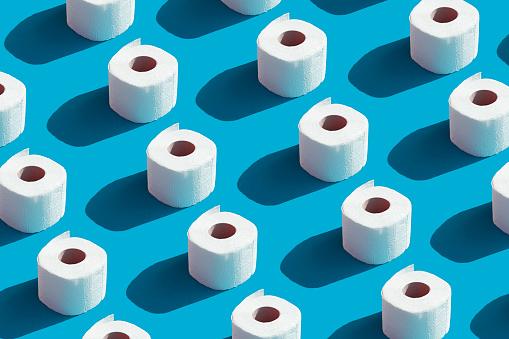We know the United States uses a lot of toilet paper (second only to China) and that other paper products like paper towels, napkins and tissues are everyday essentials. But what about other popular products that “low-key” contain paper or paper by-products?
Let’s start at the beginning and talk about what exactly paper products are and what they’re made from.
What are “paper products”?
A paper product is an item or consumer packaged goods made with 10 percent or less (by volume or weight) of paper or wood pulp materials. The remaining materials are noncellulosic and are made from laminates, coatings, saturates and binders.
You mentioned “noncellulosic,” but what’s cellulose?
Cellulose are fibers extracted from plant cell walls. Incredible, right? Cellulose, oils, and resins are organic materials found in paper-based products. Biomaterials are simply organic materials extracted from nature and are used in the making of products and as an energy source in the manufacturing process.
Besides toilet paper, what other products are made with paper?
We’re all familiar with daily items such as toilet paper, paper towels, napkins, and tissues. But paper materials and paper by-products can be found in food, clothing, cleaning products, and more! Below is a short list of everyday items that contain paper or paper by-products.
- Ice Cream: Ice cream contains microscopic paper fibers to make it creamier. Don’t worry, it’s safe to consume!
- Rocket Ships: Yup, biomaterials in space! Rocket ships use cork, a material derived from tree bark, as insulators inside the ships.
- Shoes: Some companies are replacing a rubber (an unsustainable material) with biomaterials, a naturally sustainable material.
- Crayons: The wax part of a crayon comes from leaves of a carnauba palm tree.
- Shredded cheese: Also in parmesan cheese blocks, cellulose acts as an anti-caking agent.
- Chewing Gum: Gum contains resin from trees and may be artificially flavored with tree chemicals such as spearmint and peppermint.
- Toothpaste: You may have guessed already, but toothpaste contains cellulose gum which acts as a binder. It makes the toothpaste creamy and easy to squeeze from a tube!
- Liquid soap: Soap and other cleaning products, such as shampoo, contain fatty acids derived from wood. Detergents with a lemon scent use a turpentine oil made from the resin of pine trees.
- Hairspray: This hair styling product is made with tree resins, a liquid substance that tends to harden when exposed to air.
- Nail Polish: Nail polish and other types of paints and varnishes contain both tree resins and cellulose from wood pulp. The resin is a by-product of the pine pulping process and helps the paints to dry.
- Hot chocolate: Your mug of instant hot cocoa contains cellulose that’s working as a binding agent.
- Lotions: Some lotions contain an ingredient called “stearic acid” which is produced in the papermaking process.
Did you know that nearly 5,000 products that we use on a regular basis use paper or paper by-products in their manufacturing process?
How can I incorporate more paper products into my life?
A great rule of thumb is to simply avoid items made with plastics. This can be tricky, though, as some items and food products don’t publicly list all their ingredients or inform
of their manufacturing process. Be curious, do research, and seek out companies that are vocally committed to ditching plastics and are actively choosing paper, wood, wood pulp, cellulose, resins, and other paper by-products in their materials instead.
How can I produce less paper waste during the holidays this year?
Fantastic question, and one that we should all start to consider each holiday season and throughout the year!
First, if you do a lot of online shopping (who doesn’t?!), consider combining all your shopping orders into one order to create less shipments. This will decrease the amount of
packaging you use. Although most packaging is paper based, it’s still wise to use less!
Other ideas to consider:
- Bring your own bags when shopping in-person at stores
- Make your own decorations rather than buying them at the store OR be sure to purchase decorations made from paper or paper products
- Choose wrapping paper that is recyclable and/or made from paper products. This may be tough as most commercial wrapping paper is made with coated materials that cannot be recycled.
- Use kraft paper, cloth, newspapers, or old packaging to wrap gifts. Get creative!
- When shopping online, be aware of shipping and packaging options. If a company gives the option to package and ship in an eco-friendly way, do it! We all need to begin to live more sustainable lives to protect the planet and make it healthier. We can start by being more mindful over our purchases and packaging choices.
Thankfully, the pulp and paper industry is inherently innovative, and engineers are always seeking ways to be more efficient, forward-thinking, and safe and sustainable for the planet.
Do you want to be part of changing the packaging game? You might be a future engineer! Learn more about how we help engineering students here.


Recent Comments